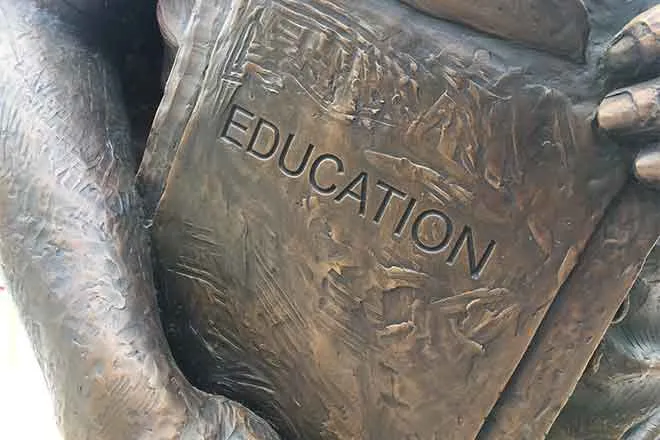
90% of Coloradans have good internet access. 99% is the goal, Polis says
(Colorado Newsline) Colorado leaders are ready to get 99% of households in the state connected to high speed, affordable broadband internet, now that the state has been awarded a large sum of federal funding, Governor Jared Polis said at a press conference Thursday.
Polis, U.S. Sen. Michael Bennet, U.S. Rep. Joe Neguse of Lafayette — all Democrats — and several other state leaders gathered at the Forge technology campus in Loveland, which implemented municipal broadband in 2018, to celebrate the $827 million in federal funds the state received as part of the Biden administration’s Broadband Equity, Access and Deployment program.
“It’s inexcusable that 190,000 Coloradans today have little to no high speed access, and that will be remedied with this investment. And we look forward to making sure that it’s deployed efficiently and effectively to help bridge the digital divide,” Polis said.
The money will go toward ensuring that every Colorado community that now has little or no broadband internet access achieves at least adequate access.
Polis set out on his goal to connect 99% of Colorado to adequate internet access last year — “adequate” means at least 100 megabits per second download and 20 mbps upload speeds by 2027. Currently, 90.2% of Colorado households have adequate access.
Polis said the goal would not have been met without the federal government’s investment.
“This is a level of investment that’s needed not just in Colorado but across the country to make sure that all communities in our state are part of our future and we will be able to deliver it in a way that provides connectivity to well over 99% of Colorado homes,” Polis said.
The BEAD program is one part of the larger bipartisan infrastructure bill. The Biden administration set aside $42.5 billion from the bill to allocate a minimum of $100 million to each state. The rest of the funding was allocated based on each state’s need, including the amount of high-cost areas needed to build infrastructure and the number of homes underserved.
Colorado landed at 22nd for the amount of funding received. Texas has the largest amount of funding, allocated at $3.3 billion.
Wrong side of the digital divide
Leaders on Thursday reflected on the past legislative, statewide and community work that led to the allocation of funds for Colorado. Polis and others noted Bennet’s advocacy in Congress for broadband investment. Bennet spearheaded the Broadband Reform and Investment to Drive Growth in the Economy Act in 2021 to make sure the federal government invested in local broadband initiatives.
The act, now part of the BEAD program, provides over $40 billion to states and tribal governments to support local initiatives promoting broadband adoption and affordability.
Bennet said that in the past, the federal government failed to actually support internet equity because federal investment went to telecommunications companies, which would not expand access to the internet in rural communities.
“The result of that failure — the failure to invest in a way that made sense to the American people — was that many communities in our state and across the country became trapped on the wrong side of the digital divide with internet that was too slow, internet that was too expensive,” Bennet said.
The BRIDGE Act, he said, put states in charge of expanding access to the internet for the first time.
Brandy Reitter, director of the Colorado Broadband Office, said it took immense effort to make this federal investment happen, including a plan Polis implemented to figure out where in Colorado the need for adequate internet access is not being met.
The office conducted a study throughout the state as part of that plan. Through surveys asking residents whether they have adequate access, state officials were able to map out exactly where underserved communities are.
According to the map, several rural counties in southern Colorado are underserved. Hinsdale County, Custer County and Dolores County have the least amount of access.
“We have a solid foundation going into it and more importantly, we know now who are the most critically unserved in our state so we can allocate this funding to support them and bridge that digital divide,” Reitter said.
Over the past few years, Colorado received almost $1.3 billion in funding for broadband investment. In December the state received $170 million from the Capital Funds Project all for broadband infrastructure.
Doug Kinkoph, National Telecommunications Information Association associate administrator, said at the press conference that the digital divide needs not only infrastructure solutions but affordability solutions.
The federal Affordable Connectivity Program provides discounts of up to $30 a month for internet service, which Kinkoph said currently over 200,000 Colorado households have signed up for — that accounts for $73 million in funding to the state.
“If we want Americans to be able to benefit, to engage and to be able to really reap the rewards of a digital economy, we have to have affordable services. (Affordability) is going to be essential as we move forward,” Kinkoph said.
He said the Colorado Broadband Office is currently working on its plan for the funds to submit to NTIA for approval. Once that happens, the funds will be available to use.
Colorado Newsline is part of States Newsroom, a network of news bureaus supported by grants and a coalition of donors as a 501c(3) public charity. Colorado Newsline maintains editorial independence. Contact Editor Quentin Young for questions: info@coloradonewsline.com. Follow Colorado Newsline on Facebook and Twitter.

















